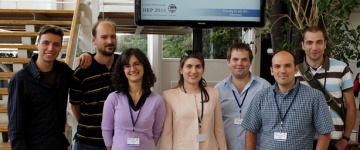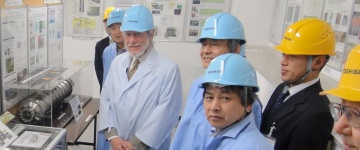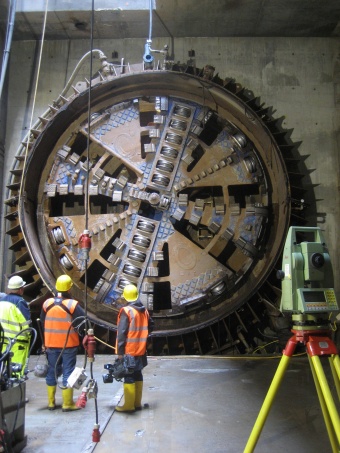Image of the week
TULA tunnels throughThe tunnel boring machine TULA (TUnnel for LAser) squeezed through a large hole in the wall of the injector building of the European XFEL facility. The hole, only 40 centimetres wider than the colossus that is TULA, made for a challengingly tight fit. TULA, which started 7 July 2010 at the European XFEL construction site in Schenefeld (Schleswig-Holstein), arrived a couple of days ago at the DESY site in Hamburg. In 13 months it has completed three tunnels with a total length of 3084 metres of the tunnel system, including the 2.1-kilometre-long linac tunnel. The second tunnel boring machine AMELI is still on its way to dig the (slightly thinner) rest of the nearly 6-kilometre long European XFEL tunnel system. TULA is 6.17 metres in diameter and 71 metres long, weighs 550 tonnes and costs 18 million Euros. |
In the News
-
from Taiwan Today9 August 2011A center will be established in Taiwan to monitor the findings of the Alpha Magnetic Spectrometer, an instrument recently placed on the International Space Station, National Science Council Minister Lee Lou-chuang said Aug. 8.
-
from New Scientist4 August 2011Antiprotons appear to ring the Earth, confined by the planet’s magnetic field lines. The antimatter, which may persist for minutes or hours before annihilating with normal matter, could in theory be used to fuel ultra-efficient rockets of the future.
-
from Iwate Nippo30 July 2011玄葉光一郎科学技術政策担当相は29日の衆院内閣委員会で、本県が受け入れを目指す超大型加速器・国際リニアコライダー(ILC)について「(政府の)総合科学技術会議でしっかり議論して、位置付けをしないといけない。大事な問題提起をいただいたと認識している」と述べ、政府として前向きに取り組む姿勢を示した。
-
from The Denki Shimbun27 July 2011東北経済連合会(会長=高橋宏明・東北電力会長)などで組織する東北加速器基礎科学研究会は26日、先端的研究分野に応用できる超大型加速器「国際リニアコライダー」を岩手県の北上高地に誘致するため、平野達男防災担当相に要望書を手渡した。
-
from Kahoku Shinpo26 July 2011国際プロジェクトで建設される超大型加速器「国際リニアコライダー(ILC)」の東北誘致を目指す産学官組織「東北加速器基礎科学研究会」は26日、国として誘致活動に乗りだすよう求める要望書を政府に提出する。
-
from The Nikkan Kogyo Shimbun25 July 2011素粒子物理学の研究に必要な次世代直線型加速器「国際リニアコライダー」の誘致をめぐる動きが激しさを増してきた。




